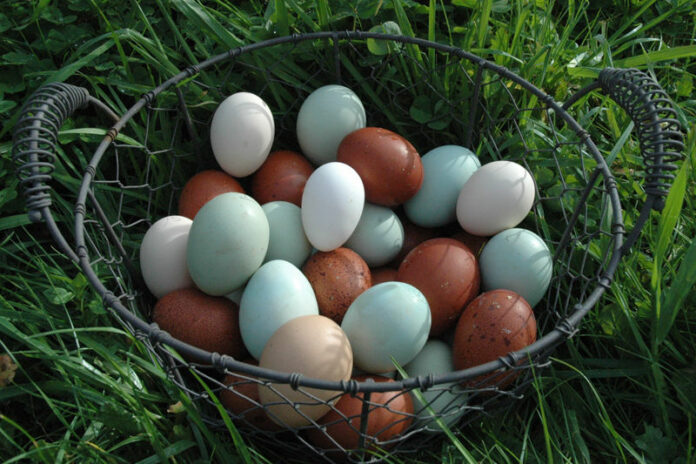Heritage livestock bring the best of the old world to modern times
In Sonoma County we love anything described with words like “heritage,” “sustainable” or “heirloom” and these words have been used to describe many facets of our local food movement.
But recently, those labels have come to apply to more than just tomatoes and squash, they are also being used for many of the animals being raised here, and they have become part of local movement for a return to the older, more holistic ways of farming.
If you have any interest in the idea of heritage or heirloom livestock, then your first stop should be the Livestock Conservancy; a national organization dedicated to preserving America’s endangered livestock and poultry breeds from extinction.
“Rare farm animals represent an irreplaceable piece of earth’s biodiversity and offer incredible variety that may be needed for future farms — robust health, mothering instincts, foraging and the ability to thrive in a changing climate,” its website reads. “These farm animals are a vital part of ensuring food security for our planet, now and for the future.”
They list over 150 breeds of endangered and heritage livestock native to the United States, and provide information on the breeds and about the farmers and breeders who are working to preserve them. In addition, there are similarly endangered breeds around the world, who have advocates working to preserve them.
Locally, the heritage movement is being championed by two local businesses, Alchemist Farm in Sebastopol who specializes in poultry and Trickster Hares in Forestville, who are focused on two breeds of rabbit.
Franchesca Duval opened Alchemist Farm three years ago, but she has been involved with chickens since she was a child. “I was raised with them,” she said. “I had a simple backyard flock of eight hens from the age of five until I headed off to college,” she said.
When she started getting back into chickens as an adult, she became interested in egg color, and which breeds would give her the greatest variety in her egg basket, which inevitably led her down the path to heritage chickens. She now has 12 different breeds on her farm, which produce a rainbow of eggs.
Mardi Storm was a childhood lover of rabbits, and an avid 4-H rabbit raiser. When she was nine she saw a Belgian Hare at a show and the rabbit captured her imagination. But it would be many years before she would get one of her own.
Storm was involved in a cat rescue and ended up with a cat that had a lot of health problems. A veterinarian suggested she try feeding a raw rabbit diet to the cat, which she did and it did alleviate the cat’s issues, but the cost of buying commercial rabbit meat was daunting.
“I returned to rabbits after a 20 year absence thinking it was a good idea to raise my own, as I remember them not costing much,” Storm said.
She remembered the Belgian Hares, and did some research to learn more about them, then contacted a breeder. “The Belgian Hare is the first rabbit imported into the United States in 1800s for food,” she said. “It made a big splash at the World’s Fair and there was a rabbit craze in the late 1800s. They were importing them from Europe, and in around 1910 one sold for like $1,000–imagine how much money that was back then? They sounded like good, meaty stock so I got this rabbit, but found that over the last 100 years it had turned into less of a meat breed and more of a fancy rabbit, for pets and showing, and I realized it was not going to work for my feeding plans. So, I started doing research at the Conservancy.”
Storm decided that if she was going to be raising food rabbits, she wanted to help restore some of these breeds to their former glory.
While she dabbled in several breeds over the years, she fell in love with another Belgian breed, the Beveren, a dual-purpose meat and fur breed, with striking blue eyes and a plush coat.
Their popularity has peaked with the rabbits fur craze of the 20’s but had since fallen to near extinction. Storm now focuses exclusively on the Beverens and the Belgian Hares. Along the way she started attending shows and winning, and realized that show ring success could also help increase the popularity of the heritage breeds.
“I hadn’t been to rabbit shows since I was 11 and all of a sudden I was winning, so I was like ‘I better do this again,’” she said. “I got known for having these heritage breeds, so people come and buy from all over the U.S.”
Despite the differences between rabbits and chickens, Duval and Storm had surprisingly similar things to say when singing the praises of their heritage breeds.
“A lot of these varieties live longer and are far more healthy than breeds you’d get from a regular hatchery, which only are made to lay for two years and be slaughtered,” Duval said. “Something else that caught my attention is there are breeds that have nice roosters. I was always raised around other folk’s roosters and had to be careful and carry a stick. I know now that heritage breeds have nicer birds and nicer roosters. I have 17 on the property and my (four-year-old) daughter could pick up any of them and not get attacked.”
“There are a lot of cute rabbits,” Storm said. “And new and modern rabbits are becoming more adorable all the time—rex fur, floppy ears–cute animals, but they won’t let you cuddle them. They don’t like people; they aren’t friendly, and not necessarily cuddly. But both of these breeds are known for being sweethearts with great personalities. The Bevern breeders have theorized one reason why they fell out of favor is because they were so sweet and friendly that people fell in love and didn’t want to eat them.”
They both go to lengths to raise their animals as they would have been originally, which means free-range and grazing, not stuck in cramped cages. While that makes them more work-intensive to raise, they see benefits in their animals’ health and production.
Both Duval and Storm also see their animals as part of the local, slow food movement. Storm does eat some of her rabbits and Duval offers her excess roosters to families in need for meat.
“Rabbits are super versatile and one of the animals that can allow people to raise their own food, which is empowering to me–discovering a viable food source and getting away from factory production,” Storm said.
“We also offer chicken raising and processing classes,” Duval said. “Our chicks are sold ‘straight run,’ so you could end up with a rooster. We teach how to process a chicken and it’s great for closing the food loop and understanding where our food comes from. It’s all about treating them with respect.
“Large scale hatcheries kill male chicks upon hatch, and that’s sad and a big possible food waste,” Duval continued. “We are a humane hatching and breeding facility, none of our males are slaughtered as chicks, they are donated to families in Sonoma County who raise them up for food. We are as conscious as we can be with the whole process of bringing life into the world and treating it well.”









